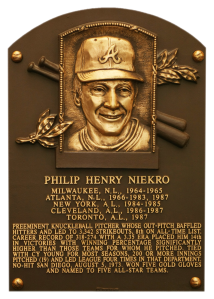
Year Inducted: 1992 (BBWAA, ballot #1, 425/430)
Score: 34108
The Mets managed to beat the odds in 1969 and win the World Series. They were dubbed the Miracle Mets because merely 7 years prior, they had lost 120 games and were the joke of baseball. But their fortunes changed forever three years prior to that. In 1966 the Braves scouted, drafted and signed a young right-handed pitcher from USC. There was only one problem; due to a technicality, the young pitcher’s contract was voided. The Mets were one of three teams along with the Phillies and Indians to be placed into a lottery for the young man’s services. The Mets won the 2 to 1 shot, and rode Tom Seaver to glory.








